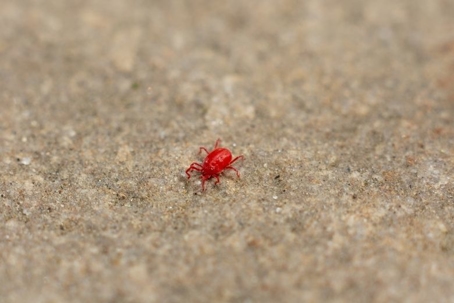Can Concrete Mites Bite?
Red velvet mites, also known as Balaustium spp. (sometimes referred to as “concrete mites” when found in homes or urban areas), are not considered a biting threat to humans. These mites are generally predatory on small arthropods or feed on plant material, and their mouthparts are not adapted to pierce human skin. While they might crawl on you, they do not actively bite or feed on humans.
Do Concrete Mites Bite?
Red velvet mites (Balaustium spp.), often called “concrete mites” when they appear in urban or indoor environments, are not known to bite people or pets under any circumstances. Their mouthparts are not designed to pierce mammalian skin, and they feed primarily on small arthropods, eggs, or plant material.
Because of this:
They do not actively seek out humans or animals.
Any contact with skin may cause temporary mild irritation from their hairs or body fluids, but this is not a true bite.
Large indoor infestations may cause concern if mites crawl on people, but this is purely a nuisance issue rather than a health risk.
In short, there are no situations in which concrete mites bite humans or pets. The only “reaction” you might see is minor skin irritation from contact, which usually resolves on its own.
Concrete Mite Bites
Concrete mites, or red velvet mites (Balaustium spp.), do not actually bite humans or pets, so there are no bite-related risks in the conventional sense. Any concerns people report are usually due to contact irritation rather than a true bite. Here’s what can happen:
Skin irritation or mild redness: Sometimes, if a mite brushes against sensitive skin, it may cause minor redness, itching, or a transient rash.
Allergic reactions: In very rare cases, sensitive individuals could develop an allergic response to mite hairs or bodily secretions, but serious reactions are uncommon.
Psychological discomfort: Seeing large numbers of mites crawling on walls, floors, or skin can cause anxiety or distress, though this is not a physical health risk.
There are no risks of disease transmission, infection, or venom effects, unlike true biting mites (e.g., chiggers or scabies mites).
What Do Concrete Mite Bites Look Like?
Since concrete mites (red velvet mites, Balaustium spp.) do not actually bite, anything people sometimes call a “bite” is usually skin irritation from contact rather than a true bite. Because of that:
Appearance: You might notice small red or pink spots, mild rash-like patches, or slight itching where a mite brushed against the skin.
Duration: These spots are temporary and usually fade within a few hours to a day.
Other symptoms: Occasionally, some people may feel mild stinging or itching, but there is no swelling, bleeding, or pus, unlike real insect bites.
If you see raised welts, blisters, or persistent irritation, it is almost certainly not caused by concrete mites, and another insect or allergen should be considered.
What To Do About Concrete Mite Bites
Since concrete mites (red velvet mites, Balaustium spp.) do not actually bite, what you might perceive as a “bite” is almost certainly minor skin irritation from contact. Here’s what to do:
Clean the area – Wash the skin with mild soap and lukewarm water to remove any mite hairs or debris.
Soothe irritation – Apply a gentle moisturizer, aloe vera, or over-the-counter hydrocortisone cream if there is redness or itching.
Avoid scratching – Scratching can worsen irritation or cause a secondary infection.
Monitor your skin – Most reactions resolve within a few hours to a day. If redness, swelling, or itching persists, consider consulting a medical professional.
Reduce exposure – Address the presence of mites in the home by sealing cracks, reducing moisture, and vacuuming regularly to prevent future contact.
You don’t need any medical treatment specifically for a “bite” because there is no venom or pathogen transmission riskfrom these mites.

